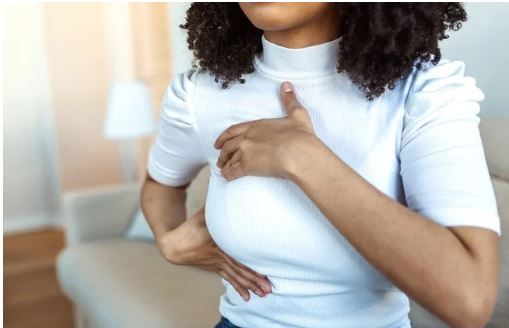Lifestyle
How to properly check your breasts for cancer lumps

Knowledge is power: knowing your own breasts and how they should feel can help you detect problems early on.
Each year, millions of women find lumps in their breasts. Thankfully, most of them turn out to be benign. Still, such lumps should never be ignored.
In South Africa, breast cancer is one of the most common forms of cancer. The risk for breast cancer increases as a person ages. Yet, age is not a factor.
As the CANSA Foundation notes: “All women are at risk, and in particular women with a family history of breast cancer.”
Unhealthy lifestyle and behavioural factors, including being inactive, overweight, consuming alcohol, having poor dietary habits, smoking and exposure to chemicals, also increase your risk.
A breast cancer self-exam (BSE) should be done once a month, preferably after your period and at the same time of day.
If you have stopped menstruating or have very irregular periods, you can pick a day each month to do this.
Breast exam: how to do it, what to look for
A BSE is a step-by-step method to examine your breasts and takes only a few minutes. According to the Cleveland Clinic, there are three simple steps to follow.
1. Visual inspection
- Remove your shirt and bra and stand in front of a mirror.
- Place your arms down by your sides.
- Look for any changes in breast shape, breast swelling, dimpling in the skin or changes in the nipples.
- Raise your arms high overhead and look for the same things.
- Put your hands on your hips and press firmly to make your chest muscles flex.
- Look for the same changes again. Be sure to look at both breasts.
2. Manual inspection while standing up
- Ensure your shirt and bra are removed.
- Then, use your right hand to examine your left breast and vice versa.
- Use the pads of your three middle fingers to press on every part of one breast – use light pressure, then medium, then firm.
- Feel for any lumps, thick spots or other changes.
- Do this in a circular pattern – it will help you make sure you hit every spot.
- Then, press the tissue under the arm.
- Be sure to check under the areola (the pigmented area on the breast that surrounds the nipple), then squeeze the nipple gently to check for discharge.
- Repeat the steps on the other side of your body.
3. Manual inspection while lying down
Your breast tissue spreads more evenly when you’re lying down, so this is a good position to feel for any changes, especially if your breasts are large.
- Lie down and put a pillow under your right shoulder.
- Place your right arm behind your head.
- Using your left hand, apply the same technique as step 2, using the pads of your fingers to press all parts of the breast tissue and under your arm.
- Swap the pillow to the other side, and check the other breast and armpit.
- Be sure to check under the areola, then squeeze the nipple gently to check for discharge.
When to contact your doctor
If you find a lump or worrisome changes in your breast, stay calm – most self-exam findings are not signs of breast cancer, notes the Cleveland Clinic. But if you notice the following, it is best to call your healthcare provider: a change in the look, feel or size of your breast; a change in the look or feel of your nipple; dimpling of the skin; any lumps or hard knots; nipple discharge; pain in one spot that won’t go away, or swelling of one or both breasts.
In 2020, breast cancer claimed the lives of 685 000 women globally. As scary as these numbers sound, research shows that mortality rates have been decreasing steadily since the 90s, thanks to increasing awareness and improved detection and treatment of the disease.
Remember, BSE’s should not replace screening tests, such as mammograms, which are recommended annually for women from the age of 40 and every two years for women aged 55 and older.
October is Breast Cancer Awareness Month, an annual campaign to raise awareness about the impact of breast cancer.










